What is Generative AI?
Generative Artificial Intelligence is a new technology introduced recently that is creating a buzz worldwide. It will help you make all kinds of content including text, graphics, synthetic data, and audio. The new user interface and the ability to create plagiarism-free, quality imagery, and audio content make it the most valuable technology in the 21st century.
Talking of brand new technology, experts say Gen AI is not a new technology but was introduced in the 1960s in chatbots. However, in 2014 the introduction of GANs, or generative adversarial networks, a machine learning algorithm. It enables you to create convincing authentic text, images, and audio of people.
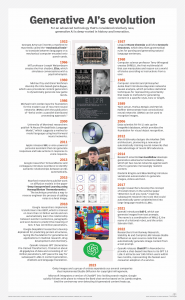
Sources: techtarget.com
Have you heard about LLM? Large Language Model is the reason behind this amazing technology which is based on various parameters. Multimodal AI does the same work as LLM. ChatGPT was the first Generative AI that gave a boost to the Gen AI technology and made it popular worldwide.
How does it work?
Generative AI allows you to create various content using prompts that could be in the form of video, images, text, musical notes, audio, or any other prompt that the AI system accepts. What kind of content you could create? Well, it could be anything, essays, solutions to problems, imagery content, or real-person audio.
The process of creating an application has also become easy and fast using Generative AI. There are many languages, frameworks, or tools for Gen AI applications. Earlier developers needed to submit data through an API or other complicated process. It was necessary to familiarize myself with a specific framework, tools, or language like Python, JavaScript, etc.
Now, the scenario has changed completely. With the better use of Generative AI developers can generate a powerful application. Give a clean and clear prompt to the AI tool and it will reflect the result as you want. For example, ‘’Create a thrilling and captivating game application that transports a character into a beautiful and visually stunning new universe. Include fantasy and imaginary devils capturing innocent native people.’’ Like this, there are many Generative AI examples to create an application.
The below graph clearly shows the constant increase in the market share of Generative AI till 2030.
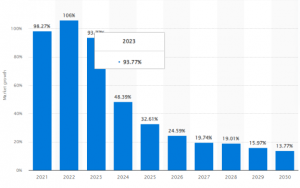
Sources: techtarget.com
Generative AI Models
Generative AI models have rapidly evolved to become a cornerstone of modern artificial intelligence, transforming how we create content, generate ideas, and solve complex problems. These models leverage sophisticated algorithms to generate new data that mimics or extends existing datasets. Here’s a closer look at what generative AI is, how it works, and its fascinating applications.
Applications of Generative AI Models
Generative AI models have a wide range of applications across various fields. Many Generative AI companies are creating user-friendly and powerful applications.
Creative Arts: Artists and designers use generative AI to create unique artwork, music compositions, and even fashion designs. These models can generate novel pieces or inspire by blending different styles.
Content Creation: In writing, generative AI assists in drafting articles, stories, and scripts. It can produce coherent and contextually relevant text, aiding writers in brainstorming and overcoming writer’s block.
Gaming: Game developers employ generative models to design new characters, levels, and scenarios, adding variety and depth to the gaming experience.
Scientific Research: In pharmaceuticals, generative AI helps design new molecules for drug discovery. By simulating potential compounds, researchers can accelerate the development of new medications.
Data Augmentation: Generative models enhance training datasets by creating synthetic examples, which is particularly useful in scenarios where data is scarce or expensive to collect.
Popular Gen AI Tools
Generative AI has surged in popularity, driving innovation across multiple sectors with its capability to produce original content. As technology continues to evolve, several applications have emerged as particularly impactful in 2024. These applications span diverse fields, from creative arts to practical business solutions, showcasing the vast potential of generative AI. Let’s delve into some of the most popular and transformative uses of generative AI today.
1. Creative Content Generation
One of the most exciting applications of generative AI in 2024 is its role in creative content generation. These models are reshaping how we create and consume art, music, and literature.
- Digital Art and NFTs: Generative AI is revolutionizing digital art, particularly in the creation of Non-Fungible Tokens (NFTs). Artists use AI to generate unique and intricate digital artworks that are then sold as NFTs. This approach not only democratizes art creation but also opens up new revenue streams for artists through blockchain technology.
- Music Composition: AI is composing music that rivals human creativity. Tools like OpenAI’s MuseNet and Google’s Magenta project enable musicians to generate complex compositions in various styles. These tools help artists experiment with different genres and create new pieces, offering fresh inspiration and expanding the possibilities in music production.
- Writing and Storytelling: Tools like ChatGPT have become indispensable for writers and content creators. These models generate compelling narratives, articles, and even poetry. They serve as creative partners, helping authors brainstorm ideas, draft content, and overcome writer’s block.
2. Personalized Experiences
Generative AI is at the forefront of creating highly personalized user experiences, enhancing how we interact with digital platforms and services.
- Custom Recommendations: Platforms like Spotify and Netflix use generative AI to curate personalized playlists and content recommendations. By analyzing user preferences and behavior, AI can suggest music, movies, and shows that align closely with individual tastes, enhancing user engagement and satisfaction.
- Interactive Virtual Assistants: Virtual assistants like Google Assistant and Amazon Alexa are becoming more sophisticated thanks to generative AI. They can generate more natural and context-aware responses, making interactions smoother and more intuitive. This technology also powers advanced customer support systems that provide personalized assistance and handle complex queries efficiently.
- Tailored Marketing Campaigns: Companies leverage generative AI to create customized marketing content. From personalized emails to targeted advertisements, AI helps craft messages that resonate more deeply with individual customers, improving conversion rates and customer loyalty.
3. Advanced Game Development
In the gaming industry, generative AI is pushing the boundaries of what is possible, creating richer and more dynamic gaming experiences.
- Procedural World Generation: Games like No Man’s Sky and Minecraft use generative AI to create expansive, procedurally generated worlds. This technology ensures that every player’s experience is unique, with landscapes, quests, and characters that vary from one game session to the next.
- Intelligent NPCs: AI generates non-player characters (NPCs) with unique behaviors and personalities, enhancing the realism and immersion of game worlds. These NPCs can adapt to players’ actions, making gameplay more engaging and challenging.
- Storyline and Quest Generation: Games increasingly rely on AI to generate dynamic storylines and quests. This allows for more diverse and replayable content, where each player’s journey through the game can be distinct and tailored to their choices.
4. Healthcare and Medical Research
Generative AI is making significant strides in healthcare, offering tools that support medical research and enhance patient care.
- Drug Discovery: Companies like Insilico Medicine and Exscientia are using generative AI to accelerate drug discovery. These models can predict how different compounds will interact with biological targets, significantly reducing the time and cost associated with bringing new drugs to market.
- Medical Imaging: AI models like those from NVIDIA’s Clara platform generate enhanced medical images, assisting doctors in diagnosing conditions more accurately. By improving image resolution and clarity, AI helps healthcare professionals identify issues that might be missed by the human eye.
- Personalized Treatment Plans: Generative AI is also being used to develop personalized treatment plans based on patient’s unique genetic profiles and medical histories. This approach allows for more targeted and effective therapies, improving patient outcomes and reducing side effects.
5. Business and Productivity Tools
In the business world, generative AI is driving efficiency and innovation, providing tools that streamline operations and enhance productivity.
- Automated Content Creation: Businesses use AI to generate marketing content, product descriptions, and reports. Tools like Jasper AI and Copy.ai automate the creation of high-quality text, freeing up time for employees to focus on strategic tasks.
- Data Synthesis and Analysis: Generative AI helps businesses synthesize data for analysis, particularly in areas where data collection is challenging or incomplete. By generating synthetic data, companies can gain deeper insights and make more informed decisions.
- Design and Prototyping: In product development, AI tools generate design prototypes and models, speeding up the innovation process. These tools allow for rapid iteration and testing, helping companies bring products to market faster and more efficiently.
Conclusion
What do we understand here? The revolutionary technology of Generative AI has already impressed tech enthusiasts and now is on the way to grabbing the big market share. More people are getting to know and hence we have made a comprehensive study on this hot topic and most loved technology.
The post What is Generative AI and How Does It Work? appeared first on .
Tags:
- Artificial intelligence
- generative ai applications
- generative ai companies
- generative ai examples
- generative ai meaning
- what is generative ai

 .NET MAUI Development
.NET MAUI Development
 Xamarin Application Development
Xamarin Application Development
 React Native App Development
React Native App Development
 iOS Application Development
iOS Application Development
 Android Application Development
Android Application Development
 Android Wear App Development
Android Wear App Development
 Ionic Development
Ionic Development
 iBeacon Application Development
iBeacon Application Development
 Universal Windows Platform (UWP)
Universal Windows Platform (UWP)
 Kotlin Application Development
Kotlin Application Development
 Swift Application Development
Swift Application Development
 Flutter Application Development
Flutter Application Development
 PWA Application Development
PWA Application Development
 Offshore Software Development
Offshore Software Development
 Custom Application Development
Custom Application Development
 Front-End Development
Front-End Development
 Full Stack Development
Full Stack Development
 AI & Machine Learning
AI & Machine Learning
 Custom CRM Solutions
Custom CRM Solutions
 Flask Software Development
Flask Software Development
 Electron JS Development
Electron JS Development
 ChatGPT Development
ChatGPT Development
Telemedicine App Development
Build Smart Telemedicine Platform
Beauty & Salon App Solutions
Hire Workato Experts
Workato Consulting & Support
 RaspBerry Pi
RaspBerry Pi
 Firmware Software Development
Firmware Software Development
 ESP 32 Software Development
ESP 32 Software Development
 Embedded Development
Embedded Development
 Internet of Things
Internet of Things
 Nordic Development
Nordic Development
6G Solutions
Smart Hospitality Solutions
Smart IoT Development
Custom IOT Enabled Smart Lock
Nuki Smart Lock
Salto Smart Lock
Smart Lock SDK Integration
TTlock Smart Lock
Dairy IoT Solutions
Smart IoT System Development for HVAC
 .NET Application Development
.NET Application Development
 .NET Nuke Development
.NET Nuke Development
 Microsoft Dynamics CRM
Microsoft Dynamics CRM
 Microsoft Small Business Solution
Microsoft Small Business Solution
 VB .NET Development
VB .NET Development
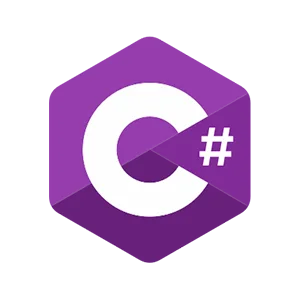 C# Development
C# Development
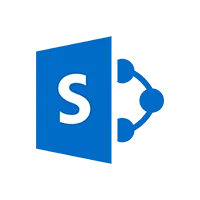 Sharepoint Migration
Sharepoint Migration
 Sharepoint Development
Sharepoint Development
 ASP.NET Core Development
ASP.NET Core Development
 ASP.NET Development
ASP.NET Development
 ASP.NET MVC Development
ASP.NET MVC Development
 Kentico CMS
Kentico CMS
 Umbraco CMS
Umbraco CMS
 AJAX Development
AJAX Development
 Agile Development
Agile Development
 Microsoft Bot
Microsoft Bot
 Microsoft Blazor
Microsoft Blazor
 Microsoft Azure Cognitive
Microsoft Azure Cognitive

 Mean Stack Development
Mean Stack Development
 Vue JS Development
Vue JS Development
 Javascript Development
Javascript Development
 Angular JS Development
Angular JS Development
 Next JS development
Next JS development
 Java Development
Java Development
 Python Development
Python Development
 Django Development
Django Development
 Cherrypy Development
Cherrypy Development
 NodeJS Development
NodeJS Development
 Laravel Development
Laravel Development
 CodeIgniter Development
CodeIgniter Development
 Zend Development
Zend Development
 Ruby on Rails Development
Ruby on Rails Development
 CakePHP Development
CakePHP Development
 PHP Website Development
PHP Website Development
 Symfony Development
Symfony Development
 Drupal Development
Drupal Development
 Joomla Development
Joomla Development
 Wordpress Development
Wordpress Development
 Magento Development
Magento Development
 Magento 2.0 Development
Magento 2.0 Development
 Magento Enterprise
Magento Enterprise
 Shopping Cart Development
Shopping Cart Development
 Prestashop Development
Prestashop Development
 Shopify Development
Shopify Development
 Open Cart Development
Open Cart Development
 WooCommerce Development
WooCommerce Development
 BigCommerce Development
BigCommerce Development
 NopCommerce Development
NopCommerce Development
 Virto Commerce Development
Virto Commerce Development
 AspDotNetStorefront Development
AspDotNetStorefront Development
 HTML 5
HTML 5
 UI/UX Design
UI/UX Design
 Graphic Design
Graphic Design
 Adobe Photoshop
Adobe Photoshop
 XML Application Development
XML Application Development
 Cloud Computing Solutions
Cloud Computing Solutions
 Azure Cloud App Development
Azure Cloud App Development
 AWS Development
AWS Development
 Google Cloud Development
Google Cloud Development
 SQL Programming Development
SQL Programming Development
 MySQL Development
MySQL Development
 MongoDB Development
MongoDB Development
 Big Data
Big Data
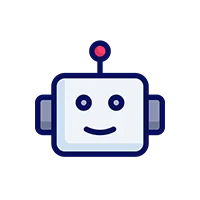 Robotic Process Automation
Robotic Process Automation
 Social Media Marketing
Social Media Marketing
 Search Engine Optimization
Search Engine Optimization
 QA Testing
QA Testing
 Software Testing
Software Testing
 Software Security
Software Security
 Maintenance And Support
Maintenance And Support
 I.T. Consulting Services
I.T. Consulting Services
 Business Intelligence
Business Intelligence
 YII Development
YII Development
 Data Analysis
Data Analysis
 Alexa Skills Development
Alexa Skills Development
 On Demand App for Mobile repairing services
On Demand App for Mobile repairing services
 On Demand App for Car Service Booking
On Demand App for Car Service Booking
 On Demand App for Cleaning Services
On Demand App for Cleaning Services
 On Demand App for Pharmacy
On Demand App for Pharmacy
 On Demand Dedicated Developers
On Demand Dedicated Developers








Leave a Reply